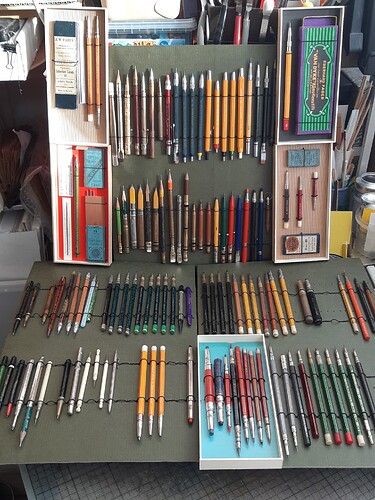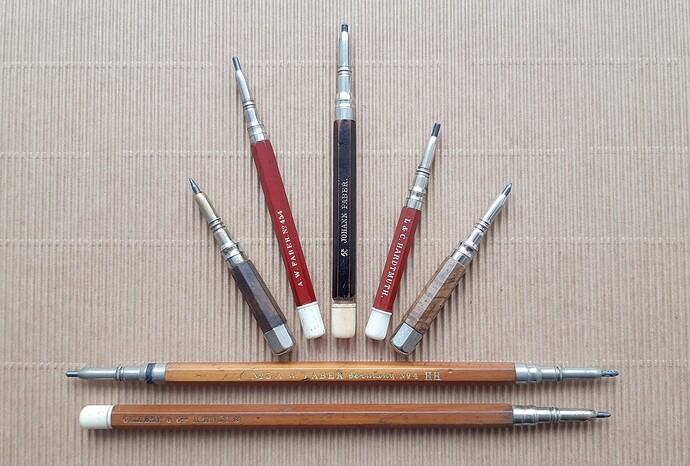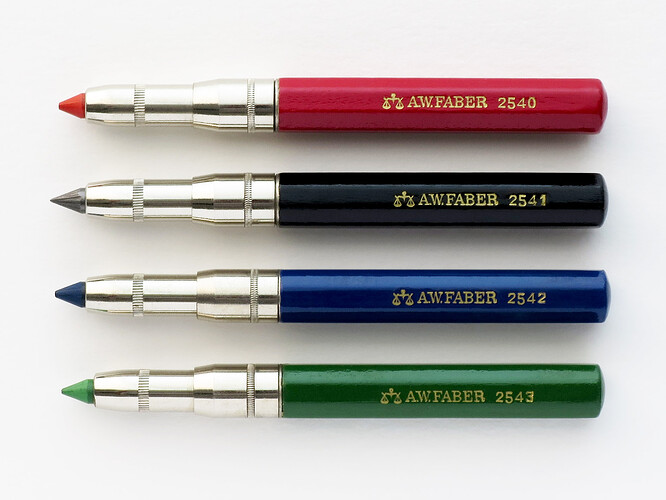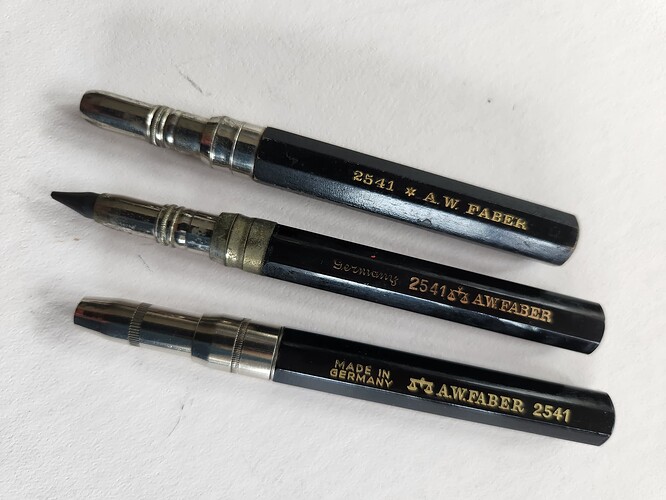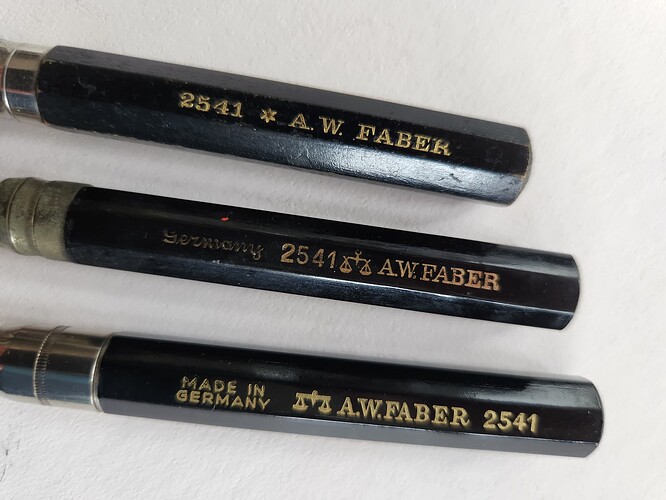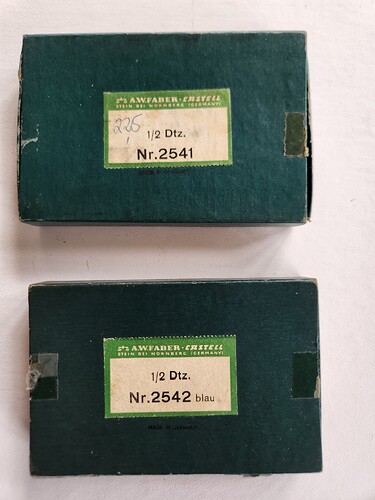I hope you post things often!
What an expensive Display! ![]()
While drooling over your collection of leadholders and other historical pencils — some models look more lie art pieces themselves to me — I could not help but notice that there seems to exist an even smaller pencil than the Faber 454 (it is in the same cardboard container).
Also, I am curious about the double-ended clutch pencils: are they practical and effective, or in the end it is a nice gimmick, but one devoid of actual usefulness? I can imagine their use in the field, but if one has a nice home studio, why cramming two lead pieces into a single barrel, when there is the possibility of accessing two handles directly?
The smaller red one is a Hardtmuth- i think its a No.80 in the catalogue- I’ll check.
As for the double ended leadholders, theres many reasons they are useful- Dark and light tonal variations used for perspectival or figure/ground emphasis, or one harder lead for draughting film and one softer for paper, or another variation was theCaran d’Ache 33 red/blue (amongst other double colour holders) where the CdA 33 was specifically designed for medical charts on hospital wards. But all very much for ease of carry, I supect. for me they are invaluable to avoid putting the tool down in mid-flow of a drawing, which can be counterproductive in longer sessions.
Oh man, they get smaller and smaller… ![]() I love everything.
I love everything.
Interesting remark about medical charts. I think teachers used the double colour system as well: red for mild mistakes, blue for serious stuff. And I see your point about not stopping the flow, quite reasonable.
Amazing as always. I’ll try to gather all my shortest pieces and take a nice group shot…
Oh that would be cool to see. Just checked the 1899 catalogue and that shortest Hardtmuth is a model 81. Old little thing!
Because it fits here:
They are 11 cm long and take 5.6 mm lead, and as far as I know these are from the 1950s.
Faber Foresters! Those are in such lovely brand new condition. Such great pencils. Thanks for posting these
I’ve never heard of that name! It looks like they have been sold for various purposes.
Edit: These pens were first offered in 1900 and sold as “Försterstifte“ (= forester pencils). In catalogues from 1909 onwards, they were no longer associated with any particular profession. The last catalogue to list them was the one from 1961. (I have written about that in my blog but forgot it.)
Yes I think I may well have learned that name from your blog!
